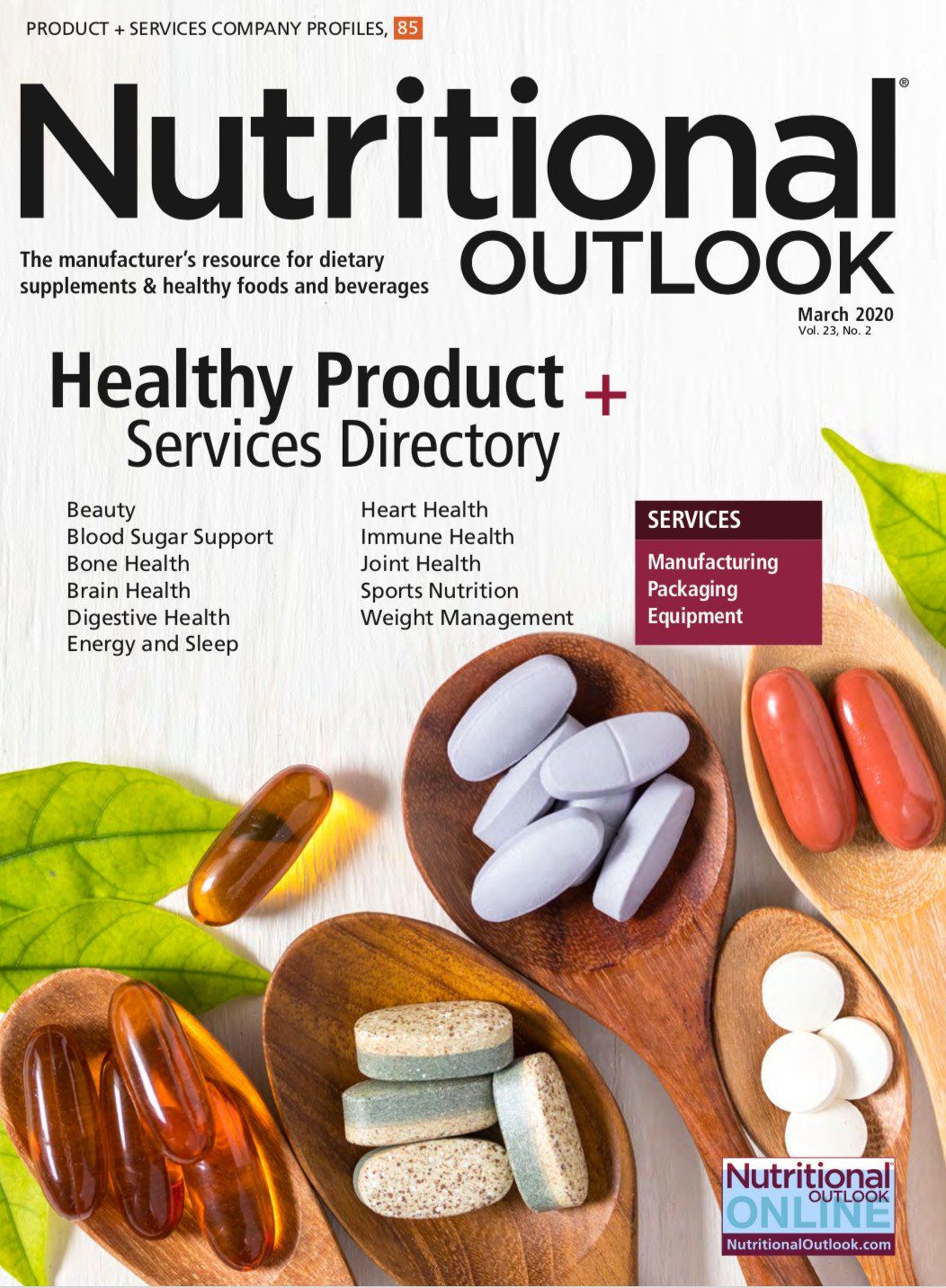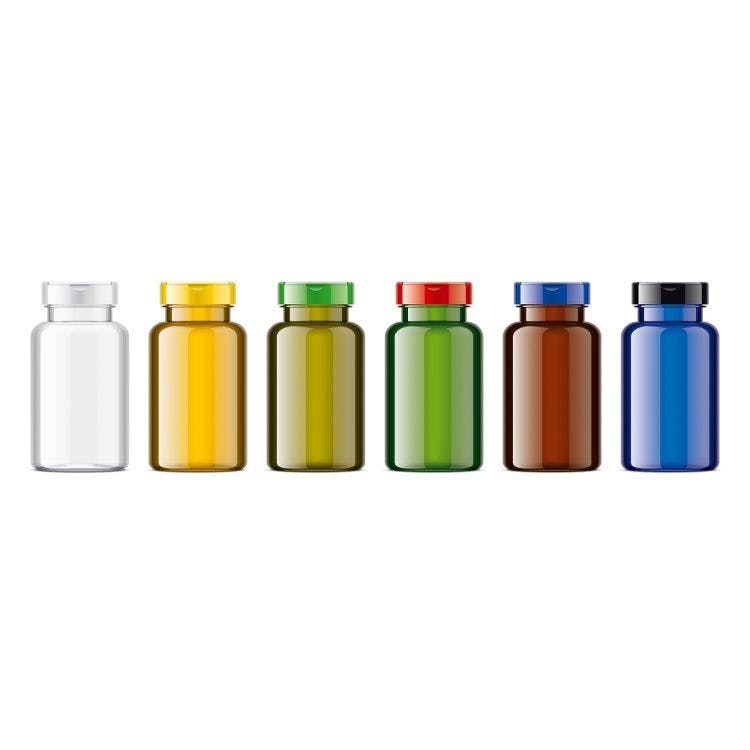Sports Nutrition in 2020: Plant proteins and beyond
Will there be a growing place for plant protein in sports nutrition? Also, what other trends are driving the sports market?
Photo credit © LMProduction - Stock.adobe.com

The sports nutrition market is an interesting animal. On the one hand, there are clear groups of consumers who continue to seek the performance gains that nutritional supplementation can provide in conjunction with training. On the other hand, someone who buys a sports nutrition product today might also look like me-maybe even you: the everyday consumer looking to lead an active and healthier lifestyle but who isn’t necessarily a hardcore athlete. (If we average Joes also reap some performance gains along the way, all the better.)
This evolving profile of the sports nutrition customer has turned the sports and active nutrition categories into growing markets with more possibilities for brand marketers than ever. Market researcher Euromonitor International reports that between 2014 and 2019, the U.S. sports nutrition market grew at an impressive 10.3% CAGR, sitting at $13 billion in 2019. Sports nutrition’s steady growth has extended as far back as 2004. Last July, Euromonitor’s Matthew Oster1 observed a 7.9% CAGR for the sports nutrition market from 2004 through 2018. Wrote Oster: “Such high growth for that long is unprecedented in fast-moving consumer goods. Fads and new product developments can stir consumer interest for a handful of years, but even the broadest trends mature and show flattening growth over the long term.”
It’s great news for those playing in this space. So, what’s really performing strongly in the sports nutrition market, and what trends will continue to influence products on the shelf?
Plant Protein
For all the research supporting the benefits of dairy proteins for muscle gain and recovery-whey especially-one might ask whether there is even a place in sports nutrition for plant proteins considering that, individually, most plant proteins often lack the full amino acid profile that whey proteins can offer those looking to build and maintain muscle mass.
“Plant proteins differ in digestibility and amino acid composition from animal proteins,” says Ralf Jäger, PhD, cofounder and partner at consulting firm Increnovo LLC. Jäger is a certified sports nutritionist and a fellow of the International Society of Sports Nutrition. “Specifically, plant proteins such as pea or rice are lower in leucine and total BCAA [branched-chain amino acid] content, amino acids that have been linked to muscle health by activating muscle protein synthesis.”
To get comparable amounts of leucine from a plant source that you would from a dairy source, a person would have to consume a lot more of the plant source, he says. For instance, while animal proteins such as whey contain approximately 10%-11% leucine, pea and rice protein offer a lower 8% leucine content. So, although rice and pea protein “have been shown to be as effective as whey protein in increasing lean body mass and strength when combined with resistance exercise,” that is only if the serving size of the plant protein is doubled “to compensate for the low leucine content of the plant proteins,” Jäger says.
Plant proteins can still compete in the sports market, with some considerations. While it’s likely that few isolated plant protein sources will stack up to the amino acid profile of dairy, the key is using a blend of plant protein sources to additively reach the amino acid target.
“I think the key with plant-based diets, other than soy, is really just eating a variety of different protein sources. Eating a legume with something else, like rice, would provide at least the same quantity of amino acids,” says Enette Larson-Meyer, PhD, RD, CSSD, FASCM, a registered dietician and exercise physiologist and professor at the University of Wyoming. She is also the coauthor of a new book, Plant-Based Sports Nutrition.
Whereas there are a ton of studies demonstrating the athletic benefits of dairy proteins, sports performance studies involving plant protein, or studies comparing dairy to plant proteins, are largely still lacking. Here, Larson-Meyer reminds the market that the well-funded dairy industry has a lot of power to drive the research on dairy, but “the little legume board isn’t going to be able to afford a big research study.”
Another way to hit sports targets while using plant proteins is to add other complementary ingredients. Says Jäger: “An alternative strategy to boost the muscle protein synthesis benefits of plant proteins is the addition of leucine or HMB (beta-hydroxy-beta-methylbutyrate).” For instance, he says, “HMB has been shown to increase the anabolic potential of soy protein.” Digestive enzymes or certain probiotic strains can also be added to help increase a person’s absorption of amino acids from plant protein, he adds.
Plant protein sources do have a lot to offer athletes and active nutrition customers by way of benefits, says Larson-Meyer: “I think that the recovery benefits of the plant-based diet are greater than those of the standard American diet because you’re eating more plants that have various phytonutrients, and some of those we know what they do, and some of them we don’t know-but those are the ones that help with anti-inflammatory effects…after a hardcore workout. Plant-based diets [also] tend to provide ample carbohydrates [for] those people who are doing more endurance type of exercise.”
It’s all in how you manage a plant-based diet, Jäger says. “Insufficient protein intake from vegetarian diets may occur if the diets are low in protein-rich foods such as legumes, nuts, or seeds; however, there is currently no evidence that a balanced vegetarian diet provides inadequate total protein intakes.”
Larson-Meyer reminds that some nutrients from plants, such as iron and zinc, can be harder to absorb from plant sources, and that consumers may want to think of other strategies to get additional, adequate amounts of those nutrients.
The decision about whether to use plant or dairy proteins-or both-also depends on your goals, she says. “You have to look at the short term versus the long term,” she says. “We definitely know that if you’re an athlete, you definitely want quick gains. If you’re doing an intensive strength-training program that’s eight weeks long and you want to maximize that gain, then probably whey protein might be the way to go during that time-more of an acute phase related to that intense recovery.”
However, she says, “There’s also some suggestion that if you keep that up, eventually you’re not going to keep gaining that much muscle. It’s probably going to level off, and then probably over time, some of the other proteins are going to catch up.” And this can be where plant proteins step in, she says, as a long-term, everyday source of protein.
It’s impossible to escape the consumer interest in plant-based diets overall, and plant sources will continue to infiltrate the sports nutrition space. Jäger says he continues to see plant proteins perform strongly in the sports nutrition market.
The market is certainly growing. Market researcher Innova Market Insights reports2 that in 2014-2018, the global number of new sports nutrition product launches making a plant-based claim grew a whopping 40%. Drilling down, the fastest-growing plant proteins based on % CAGR growth in 2014-2018 were pea protein (+65%), rice protein (+64%), and soy protein (+35%).
Among notable plant protein sports products now on the market, Innova highlighted2 in a recent report plant-based BCAAs, pea protein powder, and soy protein ready-to-drink (RTD) shakes. Increasingly, said Innova, plant protein is cropping up in the everyday snacks that active nutrition customers might consume, including bars, chips, and more. This trend toward higher-plant-protein snacks is also notable because researchers are finding that the most effective protein strategy is to spread intake out evenly throughout the day-something that snacks provide.
Consumers are interested in plant-based diets overall, whether driven by the health halo surrounding plant foods, or even sustainability concerns over the environmental detriments of producing animal protein. Beyond vegans and vegetarians, more consumers today are going flexitarian-and, by extension, looking for plant-based alternatives, including in the sports space. This is a trend expected to continue. Euromonitor calls plant proteins “now a staple” and “here to stay.”3
Other Drivers
Other than plant protein’s wide-reaching influence, what other trends and ingredients are driving the sports space nowadays?
In general, says Jäger, the biggest concerns athletes still have are ones answered by proven ingredients: hydration (ingredients like water, electrolytes, betaine), lean body mass/strength/power (protein, creatine, HMB, ATP, phosphatidic acid, etc.), endurance (beta-alanine, nitrates, choline, astaxanthin), mental performance (phosphatidylserine, creatine, caffeine, alpha-GPC, L-theanine, etc.), immune health (probiotics, beta-glucans), and recovery (protein, amino acids/BCAAs, probiotics, tart cherry, etc.).
As for emerging topics like personalization and the microbiome, which are increasingly being discussed in other sectors of the nutrition market, Jäger says that “Personalized nutrition and the microbiome are new areas in sports nutrition that might shape the future of sports nutrition; however, as of today, they play little to no role in sports nutrition, outside absolute elite athletes.” Some companies, such as FitBiomics, he says, are delving into this area, but they are the few.
Serving New Markets
Today’s sports nutrition companies are finding big opportunities within the expanding and evolving market, keeping in mind the need to serve all of the different audiences now shopping this space.
One example of this is a brand called TruWild, a nutrition brand geared to what the company dubs as “outdoor athletes”-“adventure seekers, ocean riders, mountain ascenders, obstacle racers, and, of course, trailblazers.” This brand appeals to the “weekend warrior” audience-consumers staying active and seeking nutritional support to complement their efforts.
Nathan Cox, cofounder of TruWild, talks about targeting customers. “Sports nutrition customers are ever changing,” he says. “In the past, they were more focused on body building and lifting weights in the gym. As the Internet age came, so did new sports nutrition brands, focusing on other fitness demographics such as female, natural, and outdoor fitness. These new categories are some of the leading trends in the sports nutrition industry today.”
He continues: “Supplements are shifting to a focus on lifestyle instead of being one dimensional, such as weight loss. Brands are building out their products to match the lifestyle of a very specific target market in which they cater to. In the past, brands carried large product offerings that were sold to large demographics all with different needs. Today, brands are more focused on providing supplementation focused on a certain lifestyle and regimens to support the specific needs of their users. For example, a brand will not create a weight-loss supplement if its market is geared towards runners, as they already are running to lose weight or are already in shape. Instead, they would create products to support running, such as anti-inflammation, joint support, and electrolytes.”
Paying attention to specific consumer types beyond the core athlete has paved the way for changes in everything from energy products to pre and postworkout supplements, says Cox. For instance, everyday consumers are now looking for more natural energy sources, such as green coffee bean, green tea extract, and yerba mate-ingredients that may provide the energy previously provided by ingredients like caffeine and stimulants, but without the crash. Natural ingredients are also the goal in preworkout products courting consumers such as those engaging in spin class and yoga, and are also focusing more on supporting recovery, joint health, and rehydration, he points out. And active consumers are also seeking ingredients such as adaptogens that provide adrenal support.
“The new consumers, the so-called weekend warriors, now have a supplement that enable[s] them to hit their specific fitness goals,” he says.
References:
- Oster M. “The Expansion of Sports Nutrition.” Euromonitor International Market Research Blog. Published July 31, 2019.
- Innova Market Insights presentation “Plant Powered Performance: Alternative Proteins Challenge Dairy Dominance.” Published May 2019.
- Euromonitor International report. “Sports Nutrition in the US.” Published October 2019.

Kratom sees impressive sales growth despite its regulatory status and stigma
March 12th 2025Despite its controversy, kratom is a top-selling ingredient that consumers see value in. That said, brands need to work hard to demonstrate safety and quality of kratom products in the absence of legal regulatory status. Will kratom be able to overcome its stigma for even more growth and consumer acceptance?
DOJ asks Utah court to dismiss FTC lawsuit against Xlear Inc.
March 11th 2025On March 10, the DOJ and the defendant filed a stipulation to dismiss with prejudice the lawsuit in which each party agrees “to be responsible for its own costs and fees and agrees that no party shall be responsible to any other party for any fines, costs, fees, or penalties arising from this case.”
HHS announces efforts to eliminate independent conclusion of GRAS
Published: March 11th 2025 | Updated: March 11th 2025U.S. Department of Health and Human Services (HHS) Secretary, Robert F. Kennedy Jr., is directing the acting U.S. Food and Drug Administration’s (FDA) acting commissioner to explore rulemaking that would eliminate the independent conclusion of GRAS provision.


























